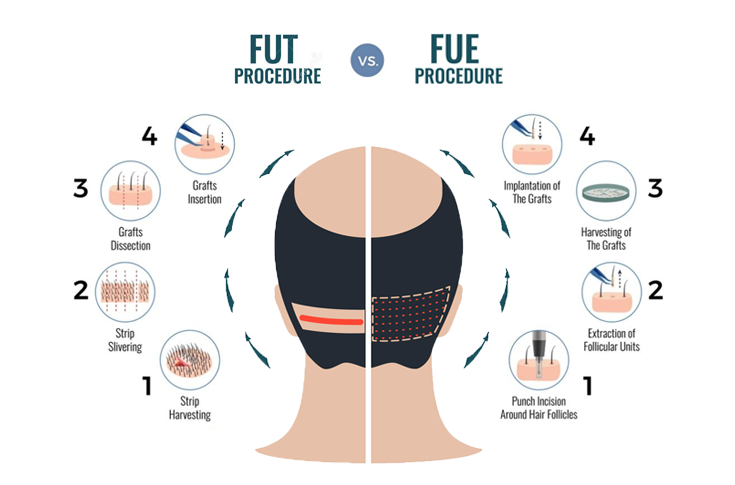When considering hair restoration options, many patients ask the same question: FUE vs. DHI Hair Transplant — which is better? These two popular techniques are among the most advanced solutions for treating hair loss, offering natural-looking results and high success rates. In this article, we break down both methods in detail, with expert insights to help you decide which is best suited for your individual needs.

What is the Difference Between FUE and DHI Hair Transplant?
To understand the debate around FUE vs. DHI Hair Transplant, it’s important to grasp the basics of each technique.
FUE (Follicular Unit Extraction)
FUE is a minimally invasive hair transplant method where individual hair follicles are extracted from the donor area (usually the back of the head) using a micro punch tool. These grafts are then implanted into tiny incisions made in the balding or thinning areas.
Key Features of FUE:
- No linear scarring
- Shorter recovery time
- Suitable for large areas of hair loss
- Can be done manually or using motorized tools
DHI (Direct Hair Implantation)
DHI is a more refined version of the FUE technique. In this method, the extracted grafts are directly implanted into the scalp using a specialized tool called a DHI implanter pen, without the need to make incisions beforehand.
Key Features of DHI:
- More precise placement
- Greater control over angle, depth, and direction
- Higher density possible in smaller areas
- Minimal trauma to the scalp
FUE vs. DHI Hair Transplant: Pros and Cons
When comparing FUE vs. DHI Hair Transplant, each method comes with its own advantages and potential limitations. Here’s how they stack up:
| Criteria | FUE | DHI |
|---|---|---|
| Precision | Moderate | High |
| Hair Density | Good | Excellent (in small areas) |
| Scalp Trauma | Low | Very Low |
| Recovery Time | Short | Slightly Longer |
| Procedure Duration | Shorter | Longer |
| Cost | More affordable | Typically more expensive |
| Ideal For | Larger bald areas | Smaller, targeted areas like hairline or crown |
Which Hair Transplant Method Do Experts Recommend?
Hair transplant specialists emphasize that there is no one-size-fits-all answer to the FUE vs. DHI Hair Transplant debate. The choice largely depends on:
- The extent of hair loss
- The quality of the donor area
- The patient’s goals and expectations
- The surgeon’s experience with each method
Expert Tip:
If you’re looking to rebuild your hairline with high density and precision, DHI might be the preferred choice. On the other hand, if your goal is to cover larger bald spots efficiently, FUE may be more suitable.
Cost Comparison: FUE vs. DHI Hair Transplant
The cost of a hair transplant can vary significantly based on the method used. Generally, DHI is slightly more expensive than FUE due to the advanced tools and longer operation time. However, many patients consider the additional cost worthwhile for the improved density and natural look it can offer in specific cases.
Which Method Offers the Most Natural Results?
Both techniques, when performed by skilled professionals, can produce highly natural-looking outcomes. However, DHI allows for more precise control over implantation angles and direction, especially important in the frontal hairline area. This can result in a softer, more realistic appearance.
Final Thoughts: FUE vs. DHI Hair Transplant
The FUE vs. DHI Hair Transplant discussion ultimately comes down to individual needs and expert consultation. Both techniques are effective, safe, and widely used in top clinics across Istanbul and the world. Consulting with a qualified hair transplant specialist is the best way to determine which approach aligns with your hair restoration goals.
Whether you choose FUE or DHI, investing in the right clinic and surgical team is just as important as the method itself.
